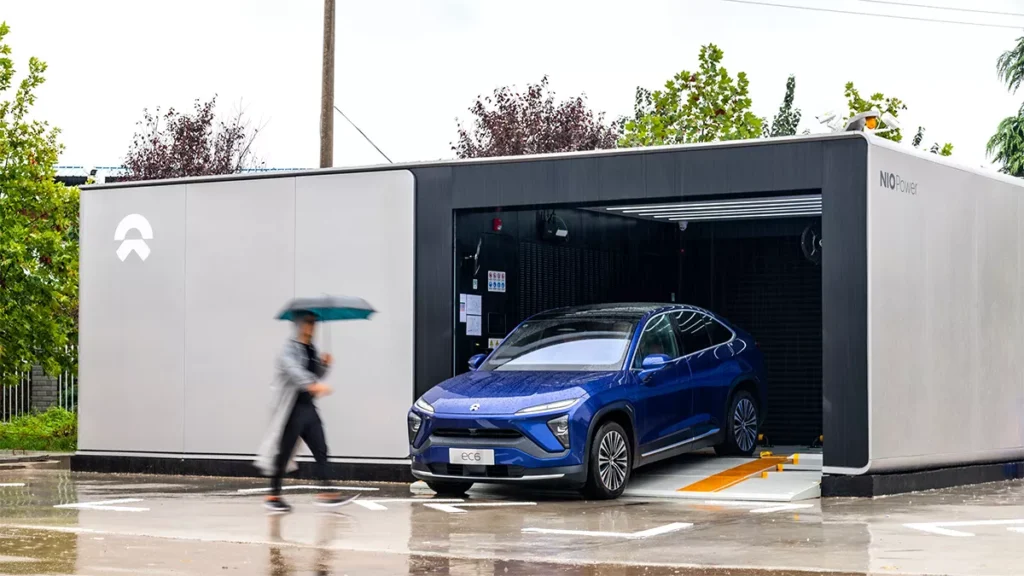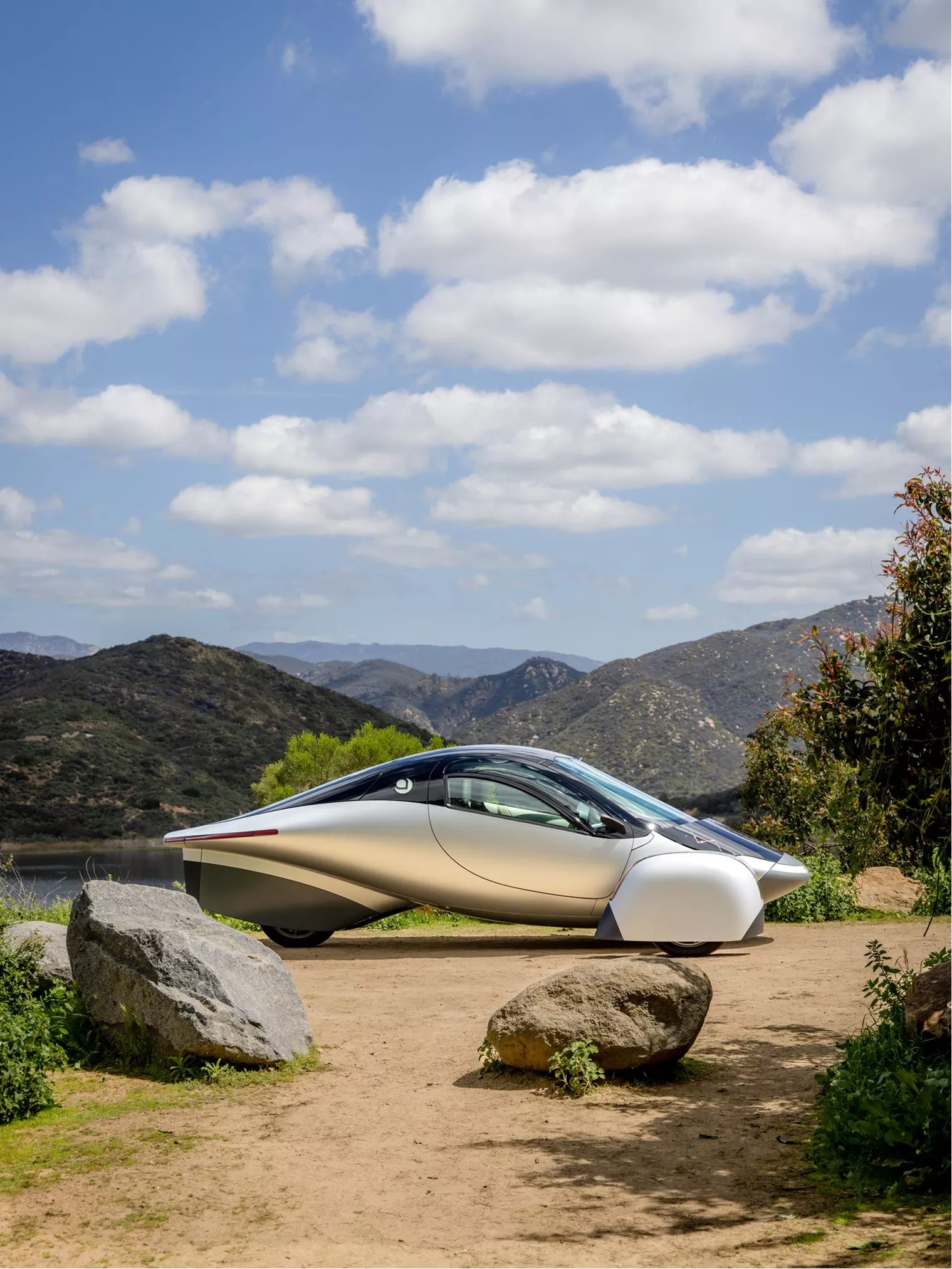










From EVs and batteries to autonomous vehicles and urban transport, we cover what actually matters. Delivered to your inbox weekly.

First it was torque. Then it was range.
Now? It’s the software.
The next wave of EV competition is behind the glass. Infotainment. Voice control. Real-time navigation. OTA updates. Driver assistance. In-car payments.
It’s all powered by the operating system — and automakers know whoever owns the OS owns the driver.
Tesla built its own walled garden. Nio and XPeng are racing to integrate AI and augmented reality. Rivian’s got trail maps. And Google? It’s already in more dashboards than you think.
👇 So what happens when the car becomes the next smartphone?
Let’s plug in and find out.

The car is getting smarter. And AiDEN wants to make it useful, not just flashy.
This AI-powered platform turns your EV into a digital command center — connecting maintenance, insurance, parking, and payments in one seamless layer. No app juggling. No data leaks. Just a smarter ride.
For automakers and service partners? It’s a goldmine: new revenue streams, zero-friction UX, and privacy baked in.
Automakers used to compete on engines and exterior styling. Now? It’s all about code, updates, and interface design. The car OS is the new profit center and everyone wants to own the screen.
For years, automakers treated infotainment like an afterthought. Laggy touchscreens, clunky nav, outdated UI. Most drivers defaulted to Apple CarPlay or Android Auto because OEM systems just couldn’t keep up.
This was the calm before the platform storm.
The 2020s flipped the switch.
The real tension? Control vs. compatibility. Do you build a locked OS like Tesla or open the door to Apple and Google?
By 2027, in-car OS will shape more than UX. It’ll define revenue, brand loyalty, and autonomy readiness.
🚨 Apple’s next-gen CarPlay wants to own the entire dashboard — but OEMs like GM and Ford are pushing back hard.
🤝 Meanwhile, in China, players like Nio and Huawei are vertically integrating — OS + chips + cloud — to future-proof their edge.
The stories you actually need to know from the EV and mobility world.
📵 GM vs. Apple: The Dashboard Divorce Is Official
GM just doubled down on its dashboard takeover: the 2026 Silverado EV Work Truck will ship without Apple CarPlay or Android Auto — just like the Blazer EV. Why? GM wants full control of the UX, data, and subscription stack. Drivers? Already pushing back. It’s the clearest signal yet that automakers are locking Big Tech out of the cockpit. (GM Authority)
🧠 Intel Unveils Next-Gen AI Chip for Software-Defined Vehicles
At Auto Shanghai 2025, Intel dropped a new AI chip built just for software-defined vehicles — with multi-chiplet architecture and serious cockpit brains. The goal? Faster performance, sharper AI, and a clear shot at owning the dashboard of the future. (Newsroom)
🚐 Volkswagen x Uber: Robotaxis Hit the Fast Lane
Volkswagen is teaming up with Uber to launch a fleet of self-driving electric ID Buzz vans in L.A. by 2026. Moia’s tech handles the autonomy, Uber handles the riders — and if the pilot sticks, this could be the first real robotaxi play on U.S. streets. (The Verge)
🤝 Toyota x Waymo: Autonomy Goes Personal
Waymo and Toyota are joining forces to bring self-driving tech to personally owned vehicles — not just fleets. Woven by Toyota is in the mix, aiming to fast-track autonomy into your driveway, not just the robo-future. (Reuters)
🛠️ Nio Starts Swapping in Europe
Nio launched new Power Swap Stations in Germany and the Netherlands, bringing its total in Europe to 60. Swaps take under 3 minutes — and come bundled with Battery-as-a-Service plans. Will Europe embrace swapping? Nio’s betting on it. (Xinhua)
From infotainment to autonomy, the operating system is now the most valuable layer in the vehicle. And just like Android vs. iOS reshaped phones, a new fight is unfolding between automakers, tech giants, and full-stack challengers.
Who controls the dashboard? Who owns the user data? And who turns the vehicle into a revenue stream on wheels?
Let’s bust some myths.
🚫 Reality: That’s changing fast.
Yes, over 70% of U.S. drivers say CarPlay or Android Auto is a must-have. But automakers aren’t buying it. GM, Ford, and others are phasing them out in favor of native systems that give them full control over UX, data, and monetization. Why let Apple own the dashboard when you can sell your own in-car subscriptions?
Think Spotify, maps, heated seats, and even insurance all bundled through your car’s own OS.
⚠️ Reality: The lead is shrinking.
Tesla changed the game by building its own stack. But rivals are catching up. NIO’s SkyOS integrates AR dashboards and voice assistants. Rivian is building a custom OS on Android. XPeng’s Xmart OS overlays real-time LiDAR visualization. The result? Polished, responsive in-car UX that rivals (and sometimes beats) Tesla’s.
♻️ Reality: Not quite.
Google’s Android Automotive OS is powering cars from Volvo, Polestar, GM, and Renault, giving automakers deep Maps and Assistant integration without going full Google. But Android Automotive is open-source, which means automakers can heavily customize it without handing over all their data.
It’s not a Trojan horse, but a toolkit. And some carmakers are building castles with it.
🌍 Reality: It’s happening right now.
The EV OS is all about capturing value in the post-hardware era.
The next time you get into a car, ask yourself:
Who’s really driving — your hands, or their code?
“One chart that shows how China seized the lead in the robotaxi wars” – Business Insider
Forget the West — China’s already off the starting line.
In 2024, more than 50% of new cars sold in China came with advanced driver-assistance systems (ADAS). In the U.S.? Still below 40%.
BYD is rolling out “God’s Eye” vision tech across its fleet. Baidu’s robotaxis are racking up miles. And with an endless stream of AI talent, chip access, and data, China’s scaling autonomous driving fast — and without Silicon Valley gatekeepers.
Read it here and see what’s coming around the bend.
For years, Big Tech thought it would own the car. Apple had Project Titan. Google had Waymo and Android Auto. Amazon had Alexa on wheels.
But here’s what actually happened:
🚫 Apple’s full self-driving dream? Scrapped.
⚠️ Google’s Android Automotive? Widely adopted — but automakers are boxing it in, limiting access to vehicle data.
💬 Amazon? Still stuck asking drivers to repeat themselves.
Meanwhile, automakers like Tesla, NIO, and Rivian are doing what Silicon Valley couldn’t: building vertically integrated, OTA-updating, subscription-friendly operating systems that actually feel native to the car.
The twist? The next EV edge won’t be torque or range. It’ll be interface.
Whoever controls the screen… controls the upsell.
And the data.
And the loyalty.
The dashboard isn’t just a screen anymore. It’s the new home screen.
Now here’s the real question:
🚘 If the car is becoming the next smartphone…
📱 …do you want Apple’s UI — or Tesla’s lock-in?